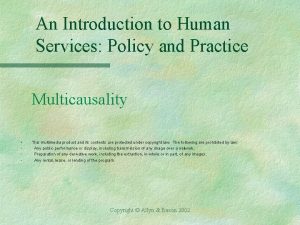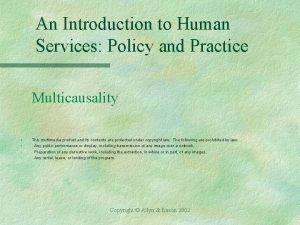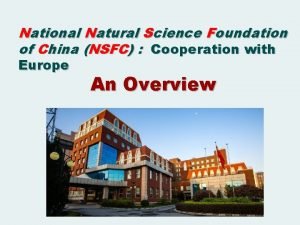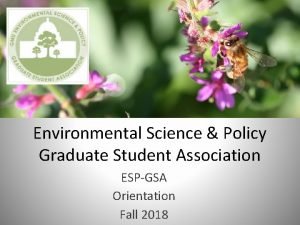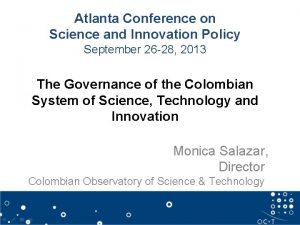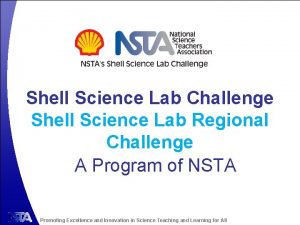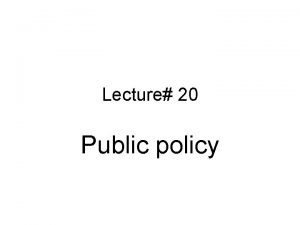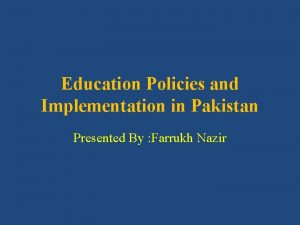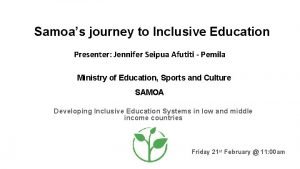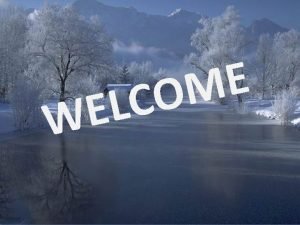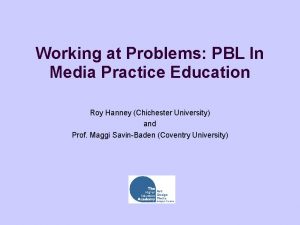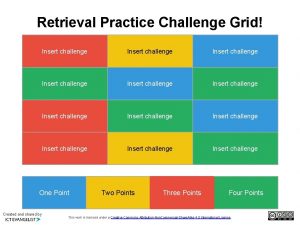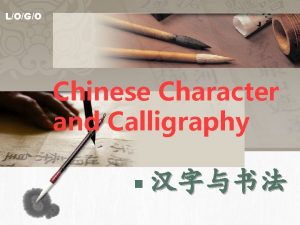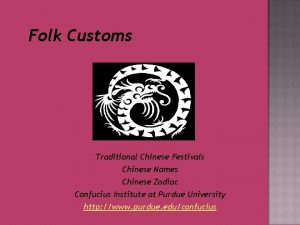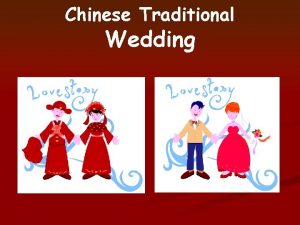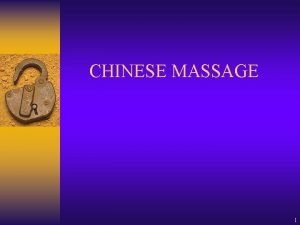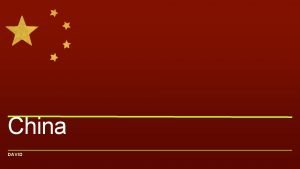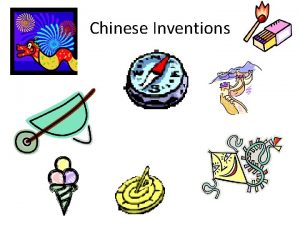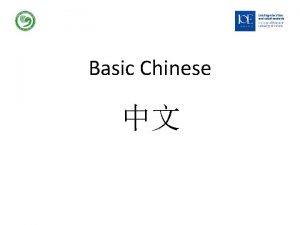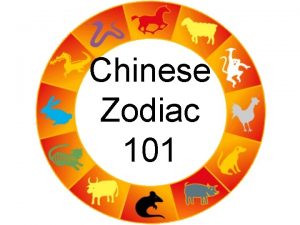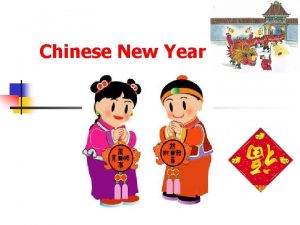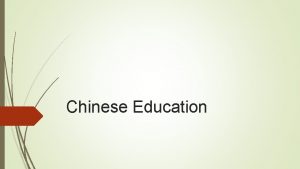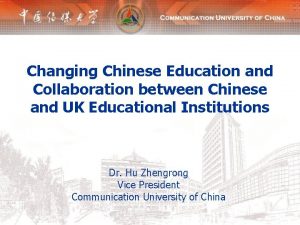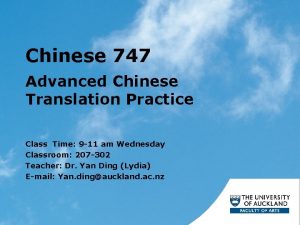Chinese Science Education Policy Practice and Challenge Li



















- Slides: 19

Chinese Science Education: Policy, Practice, and Challenge Li Xiuju, Ph. D. China Research Institute for Science Popularization 18/12/2017 1

1. History of Chinese Science education 1900 s • Modern school system was first built in China • 1904, released a school regulation policy making physics, chemistry, and nature part of school curriculum • 1978 -1980 s: elite oriented education system. prepare future scientists and engineers 1904 • 1980 -2000: mass education system. foundational scientific 1978 -2000 knowledge and basic science skills • Curriculum reform in pursuit of quality education: for scientific literacy of all students. 2000 -now 2

2. Chinese Science Education System 2. 1 the world’s biggest science education system • Pre-school: 1, 844, 148 • Elementary school: 5, 633, 906 • Junior secondary school: 3, 488, 430 • Senior secondary school: 1, 670, 720 • special education schools: 48, 125 • Undergraduate: 1, 091, 654 3

2. Chinese Science Education System Senior secondary Science: biology, physics, chemistry, earth school science(grade 10 -12) Junior secondary Basic school education Elementary school kindergarten Science: biology, physics, chemistry, earth science (grade 7 -9) 9 yearcompulsory education Science (grade 1 -6) Science ( preschool) 4

3. Science Education Policies Ø Reform of the state curriculum of basic education • 2001, National Science Curriculum Standards For The Full Time Compulsory Education (Grades 3 -6)(trial Version) • 2017, National science curriculum standards for the full time compulsory education(grade 1 -6) Ø Outline of the National Scheme for Scientific Literacy (2006 -2010 -2020) 5

3. Science Education Policies: Cultivating Science Teachers Ø Pre-service teacher education • Free Normal Education Ø Professional development for in-service science teacher • • National Teacher Training Program Back to the university—— in-service professional development of science teachers in high schools 6

4. Science Curriculum System In A Secondary School Elective All students who have interests in science High potential in science students Students interested in Science Compulsory All students science festival/science camp /science lectures Research curriculum Advanced science curriculum School based-science curriculum National science curriculum

Students attend research curriculum School based science curriculum textbooks 8

5. Informal Science Education Selecting science talents Cultivating science talents Promoting student pursue science 9

• Promoting students pursue science programs: – Science camps in the universities – Bridging science museums to school – Adolescent scientific investigation experience 10

Case 1: Biology class taken In the museum • Beijing Museum of Natural History promotes a “Biology class taken in the museum” suitable for junior high school students. • The “Biology class taken in the museum” program is for two hours every two weeks in Beijing Museum of Natural History , and the students learn from museum experts about subjects such as paleontology, entomology, microbiology, botany and ecology either in the museum or in other places. 11

12

Cultivating science talents programs – The Young Science Talent Program 13

• Selecting science talents programs – China Adolescent Science and Technology Innovation Contest (CASTIC) – China Adolescent Robot Competition (CARC) – Awards for Future Scientists (AFS) – Science Olympiads 14

6. Assessing Students 'Scientific Literacy • CRISP science education team developed three assessing students 'scientific literacy tools for grade 4, grade 6, grade 8 students. • The tools includes four parts: physical sciences; life sciences; earth and space sciences; engineering and technology. 15

• for Life science, physical science and earth science, each part has 10 items. For engineering and technology part, it has 4 items. • Most of items are multiple choice, each part has 1 short answers item. • In 2016, CRISP had finished two pilot surveys via paper and pencil in Beijing and Chongqing. We revised the three tools based on the pilot survey results. • In 2017, CRISP did the surveys online in Beijing, Shanghai, Fujian, Zhejiang provinces. Now we just finished the survey. We will revised the tools and online system based on these results. 16

17

6. Challenges • Lack of science teachers: elementary science teachers • How to get a balanced development • Further deepening the collaboration between scientists and educators 18

Thank you for your patience! 19
 Anglo chinese school primary
Anglo chinese school primary Welcome to teen challenge uk - teen challenge uk
Welcome to teen challenge uk - teen challenge uk My favorite school subject
My favorite school subject Class in chinese translation
Class in chinese translation Multicausality in human services
Multicausality in human services Multicausality in human services
Multicausality in human services National natural science foundation of china
National natural science foundation of china Esp gmu
Esp gmu Atlanta conference on science and innovation policy
Atlanta conference on science and innovation policy Shell science lab challenge
Shell science lab challenge Fiscal policy practice
Fiscal policy practice Define policy practice
Define policy practice Myeplg website
Myeplg website Policy science should not be cloaked in the guise of
Policy science should not be cloaked in the guise of National education policy 1998 to 2010 in pakistan
National education policy 1998 to 2010 in pakistan Inclusive education policy
Inclusive education policy Npe 1986 conclusion
Npe 1986 conclusion Media practice and education
Media practice and education Natural science and social science similarities
Natural science and social science similarities Extra credit
Extra credit




